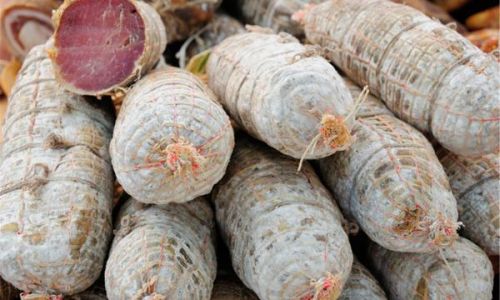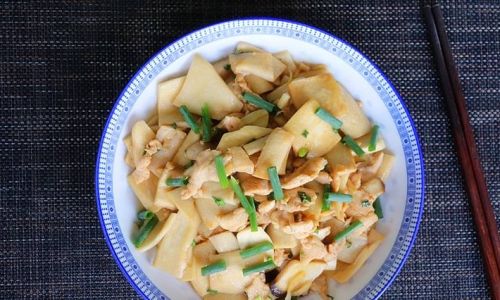Introduction
In the realm of culinary delights, dried fruits occupy a unique niche, offering a concentrated burst of flavor and texture that fresh fruits can seldom match. Among the myriad of dried fruits available, dried red bayberries (Myrica rubra), often simply referred to as dried yangmei in Chinese, stand out for their tart-sweet taste and vibrant crimson hue. These small, jewel-like fruits are native to East Asia, particularly prevalent in China, Japan, and Korea, where they have been cherished for centuries not only for their taste but also for their medicinal properties.

The process of transforming fresh red bayberries into their dried form is both an art and a science, involving careful selection, meticulous drying techniques, and patience. One of the most frequently asked questions by those embarking on this culinary journey is: “How long do red bayberries need to be dried before they are ready to eat?” This article delves into the intricacies of drying red bayberries, exploring the various factors that influence drying time, the different methods employed, and the importance of achieving the perfect balance of moisture and flavor.
Understanding the Drying Process
Before diving into the specifics of drying time, it’s crucial to understand the fundamental principles behind fruit drying. Drying is essentially a preservation technique that involves removing moisture from food to inhibit the growth of microorganisms that cause spoilage. In the case of red bayberries, drying not only extends their shelf life but also intensifies their flavor, creating a unique texture that is chewy yet slightly crispy.
The drying process can be broadly categorized into two types: natural drying (or sun-drying) and artificial drying (using ovens or dehydrators). Each method has its own set of advantages and disadvantages, and the choice between them often depends on factors such as climate, available equipment, and personal preference.
Natural Drying: The Sun’s Gentle Touch
Natural drying, or sun-drying, is the oldest and most traditional method of drying red bayberries. It relies solely on the sun’s heat and wind to evaporate moisture from the fruits. This method is highly sustainable and cost-effective, but it is also the most unpredictable and time-consuming.
Preparation for Sun-Drying
Before exposing the bayberries to the sun, they must be carefully prepared. Start by selecting ripe, firm fruits that are free from blemishes and pests. Rinse them gently under running water and pat them dry using a clean cloth or paper towels. It’s important to note that excess water should be removed to prevent mold growth during the drying process.
Once cleaned, the bayberries can be pierced with a needle or toothpick to create small holes. This step facilitates moisture escape and ensures more uniform drying. The fruits are then laid out in a single layer on drying racks, screens, or even clean tarps, ensuring they are not overcrowded to allow for adequate air circulation.
The Drying Timeline
The duration of sun-drying red bayberries can vary widely, depending on several factors:

-
Climate: The amount of sunlight and temperature play crucial roles. In warm, sunny climates with low humidity, drying can be completed in as little as two to three days. However, in cooler, more humid regions, it may take up to a week or even longer.
-
Fruit Size and Maturity: Larger, juicier bayberries will take longer to dry than smaller, less juicy ones. Similarly, overripe fruits may dry more quickly but may also lose more of their flavor and texture.
-
Drying Conditions: The arrangement of the fruits on the drying racks and the exposure to direct sunlight can affect drying time. Ensuring that the fruits are well-spaced and receive even sunlight exposure will help speed up the process.
-
Desired Moisture Content: The final moisture content of the dried bayberries is a matter of personal preference. Some prefer a chewier texture with higher moisture content, while others like a crispier, more concentrated flavor. Generally, dried bayberries are considered ready when they have shrunk to about half their original size and feel firm to the touch.
Throughout the drying process, it’s essential to monitor the bayberries regularly. This involves flipping them occasionally to ensure even drying and checking for signs of mold or discoloration. If rain is forecasted, the fruits should be quickly covered or brought indoors to prevent moisture absorption.
Artificial Drying: Precision and Control
Artificial drying methods, such as using ovens or dehydrators, offer a more controlled environment for drying red bayberries. These methods allow for precise temperature and humidity settings, enabling faster and more consistent drying times.
Oven Drying
To dry bayberries in an oven, preheat it to a low temperature, typically between 140°F (60°C) and 170°F (77°C). Spread the prepared bayberries in a single layer on baking sheets lined with parchment paper or silicone mats. Place the sheets in the oven and leave the door slightly ajar to allow moisture to escape.
Drying times in an oven can range from 4 to 8 hours, depending on the oven’s efficiency, the set temperature, and the desired moisture content. It’s important to check the bayberries every few hours, stirring them gently to ensure even drying. As with sun-drying, the goal is to achieve a firm, slightly tacky texture without burning the fruits.
Dehydrator Drying

Dehydrators are specifically designed for drying fruits and vegetables, offering multiple trays and adjustable temperature settings. They are particularly useful for those living in humid climates where sun-drying is impractical.
To dry bayberries in a dehydrator, set the temperature to around 135°F (57°C) and spread the fruits evenly across the trays. Dehydrating times can vary from 6 to 12 hours, depending on the model of the dehydrator and the desired texture. Like oven drying, regular monitoring and stirring are necessary to prevent over-drying or burning.
Post-Drying Considerations
Once the bayberries have reached the desired moisture content, they should be removed from the drying apparatus and allowed to cool completely. This helps them firm up further and develop their final texture.
Storing dried bayberries properly is essential to maintain their quality and extend their shelf life. They should be kept in airtight containers in a cool, dark place, away from direct sunlight and moisture. Properly stored, dried red bayberries can last for several months to a year.
Conclusion
The art of drying red bayberries is a delicate balance of science and intuition, requiring patience, attention to detail, and an understanding of the unique characteristics of the fruit. While the exact drying time can vary widely based on climate, equipment, and personal preference, achieving the perfect balance of moisture and flavor is the ultimate goal.
Whether you choose the traditional sun-drying method or opt for the precision of artificial drying, the result is a delightful treat that captures the essence of the season and offers a burst of flavor in every bite. Dried red bayberries make an excellent snack on their own, can be used as a topping for yogurt or ice cream, or incorporated into baked goods and desserts. Their versatility and rich history make them a cherished addition to any culinary repertoire.
As you embark on your journey of drying red bayberries, remember that the process is as much about enjoying the moment and appreciating the natural beauty of the fruit as it is about achieving a final product. With each batch you dry, you’ll gain a deeper understanding of the nuances of this ancient preservation technique, and perhaps even develop your own unique twist on the classic dried bayberry.
So, the next time you find yourself with a bounty of fresh red bayberries, consider transforming them into a delicious dried treat. And when asked how long they need to be dried, you can confidently share your knowledge and experiences, knowing that the answer lies in the careful balance of time, temperature, and a little bit of love.






0 comments